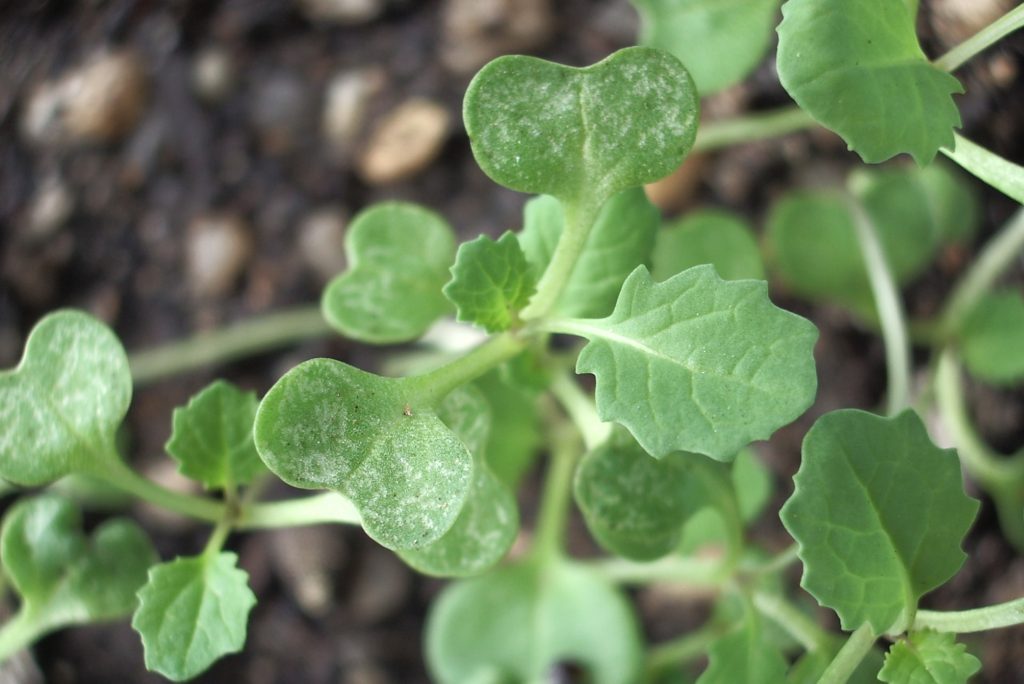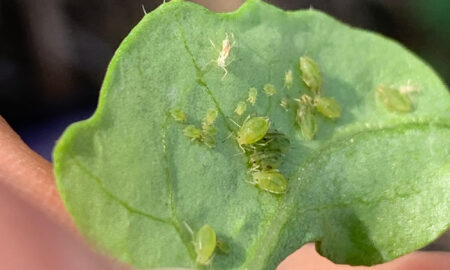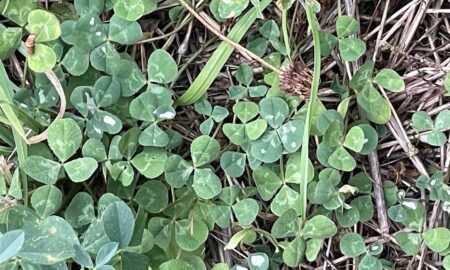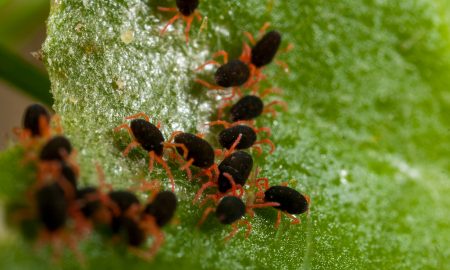Warm autumn weather during May has favoured Bryobia mite (Bryobia spp.) activity, leading to populations reported in young crops, including canola, vetch, lupins and wheat.
Bryobia mites feed by piercing and sucking the surfaces of leaves, creating trails of white-grey spots. Feeding may also cause leaf distortion or cupping, and can kill seedlings.
Crop establishment is the most vulnerable period for Bryobia mite damage during the winter cropping season.

Identification challenges
The term Bryobia mite does not refer to one, but several species of mites belonging to the Bryobia genus. In Australia, there are as many as 7 species in broadacre crops and pastures.
The challenge is that their taxonomy is complex and any features to distinguish between species are not discernible in the field.
But is this just an issue for taxonomists? Or could this identification debacle have implications for management?
Chemical control implications
Research has shown that one Bryobia mite species is more susceptible to organophosphates (OPs) than synthetic pyrethroids (SPs).
What’s more, over the years we have received reports of SPs failing to provide adequate control of Bryobia mites (even at fully registered rates) – but not always.
This begs the question, why do Bryobia mites respond inconsistently to SPs?
Assuming that there were no problems with application, we can only theorise that there could be different insecticide tolerances to SPs between Bryobia species.
This would not be unheard of in the mite world. For example, the blue oat mite, refers to three species of Penthaleus mites – Penthaleus falcatus, Penthaleus major and Penthaleus tectus – in which case P. falcatus has a higher tolerance to a range of chemicals than the latter two species.
cesar research scientist Dr. Aston Arthur is currently undertaking baseline insecticide sensitivity testing on Bryobia mites.
She would like to hear from growers or advisers who have seen Bryobia mites this year.
We encourage you to get in touch with Dr. Arthur at aarthur@cesaraustralia.com or phone 0427 875 040. She will be undertaking fieldwork and collecting Bryobia mites over the coming weeks.
Management considerations
If spraying is warranted for Bryobia mites this season, take into account that:
- Bryobia mite populations decline during winter, so this may ease the burden and give crops and pastures the opportunity to grow away from damage.
- OPs generally provide better control than SPs in the case of Bryobia.
- Adhere to label rates; Bryobia mites are generally more tolerant to insecticides than some other species affecting the same hosts (e.g. redlegged earth mite).
For more information Bryobia mites, including non-chemical control tactics, please visit our comprehensive PestNote.
Acknowledgements
Field observations
Neil Durning – Riverina Independent Agronomy (Riverina NSW)
James Falvey – Landmark (Mallee VIC)
Andrew McMahen – Landmark (Mallee VIC)
Craig Muir – AGRIvision Consultants (Mallee VIC)
Glenn Shepard – IMAG Consulting (Central West Slopes & Plains NSW)
Cover image: Photo by Julia Severi, Cesar Australia





